For a segment of the population, spiders invoke nightmarish images. Whether it is a genuine phobia or a mere distaste for these arachnids, it is only natural to desire a spider-free living space. Fortunately, there are straightforward and effective methods to deter spiders from making your home theirs.
One of the most interesting methods is by using certain colors that spiders are known to dislike. In this post, we will explore what colors spiders hate. Among these approaches, using specific colors known to repel spiders stands out.
This discussion will delve into the fascinating world of colors that spiders abhor, and how you can leverage this knowledge to your advantage. From interior decor to attire and accessories, you will uncover how these hues can play a pivotal role in ensuring a spider-free sanctuary.
THE ARACHNID AVERSION AND THE COLORS SPIDERS LOATHE:
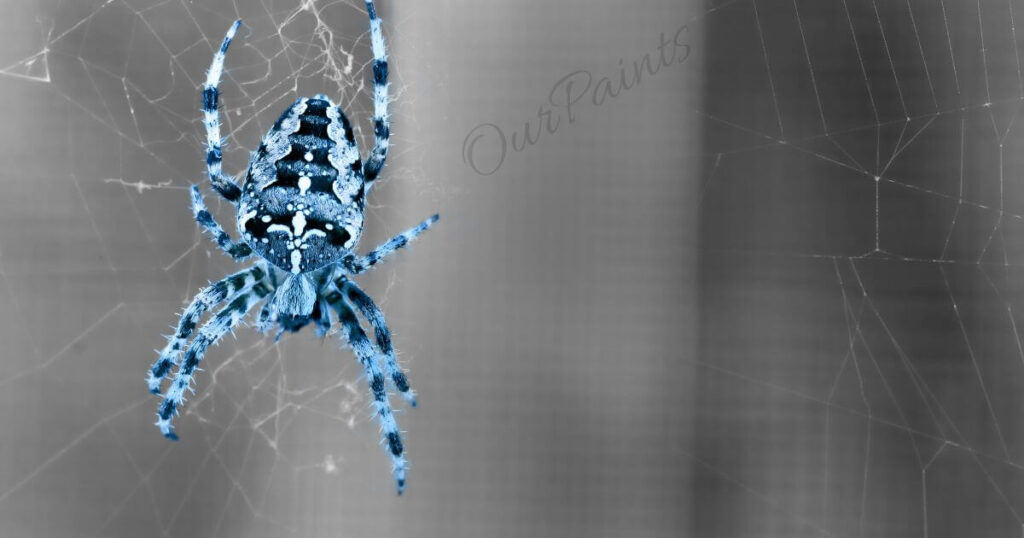
Spiders, with their eight-legged elegance and intricate webs, straddle the line between fascination and fear. While some may marvel at their delicate intricacies, others experience an intense aversion. If you fall into the latter category, the revelation that there are specific colors that spiders loathe will likely delight you.
We will venture into the intriguing world of arachnid aversion and explore the colors that spiders disdain. Whether you aim to repel these arachnids from your living space or simply seek to understand their aversion, this information is bound to pique your curiosity.
Colors wield substantial influence in the lives of spiders. These arachnids boast specialized eye cells capable of detecting a broad spectrum of colors. While certain colors might go unnoticed or even attract them, there exist particular hues that prompt a rapid retreat. Understanding this aversion equips us to employ colors as a natural deterrent, keeping spiders at bay.
Throughout this discourse, we shall unearth the palette of colors that repulse spiders and unravel the rationale behind their aversion. From vivid oranges and fiery reds to deep blues and purples, we will unveil an array of hues that can help you establish a spider-free domain.
So, if you’re prepared to bid adieu to these eight-legged intruders and embrace a spider-free habitat, read on as we unlock the secrets of arachnid aversion and plunge into a realm where colors bear the power to repel these intriguing yet unnerving creatures.
THE SCIENCE BEHIND SPIDER COLOR PREFERENCES:
The science behind spider color preferences is a captivating field that sheds light on the intricate interplay between spiders and their surroundings. Researchers have revealed that, like many other creatures, spiders exhibit distinct color preferences, which influence their behavior and habitat selection.
One key factor underpinning spider color preferences is their visual system. Spiders possess an array of eye types, ranging from rudimentary light sensors to more sophisticated compound eyes. These ocular variations enable spiders to perceive a wide spectrum of colors, albeit different from that of humans.
Studies have disclosed that spiders are inclined to be attracted to specific colors while shying away from others. For instance, many spiders exhibit an aversion to bright and vibrant colors such as red, yellow, and white. This repulsion is believed to be an evolutionary response, given the association of these colors with predators or toxic elements in nature.
Spiders tend to gravitate towards darker, more subdued colors such as black, brown, and green. These hues provide optimal camouflage for spiders, enabling them to seamlessly blend into their environments and elude both prey and predators.
It’s worth noting that spider color preferences may fluctuate depending on the species and their ecological niche. Different spider species may exhibit divergent color preferences rooted in their hunting strategies, favored habitats, and the availability of prey.
Comprehending the science governing spider color preferences offers practical applications in various domains. For instance, it can prove valuable in crafting effective spider repellents or devising pest control tactics. By introducing colors that spiders find aversive to our surroundings, we can create environments less appealing to these eight-legged denizens.
In closing, the science underlying spider color preferences furnishes profound insights into the multifaceted world of these arachnids. By grasping the colors that spiders disdain, we gain deeper insights into their conduct, enhance our capacity to coexist with them, and potentially uncover innovative solutions for managing spider populations within our abodes and gardens.
RED: THE COLOR THAT REPELS SPIDERS:
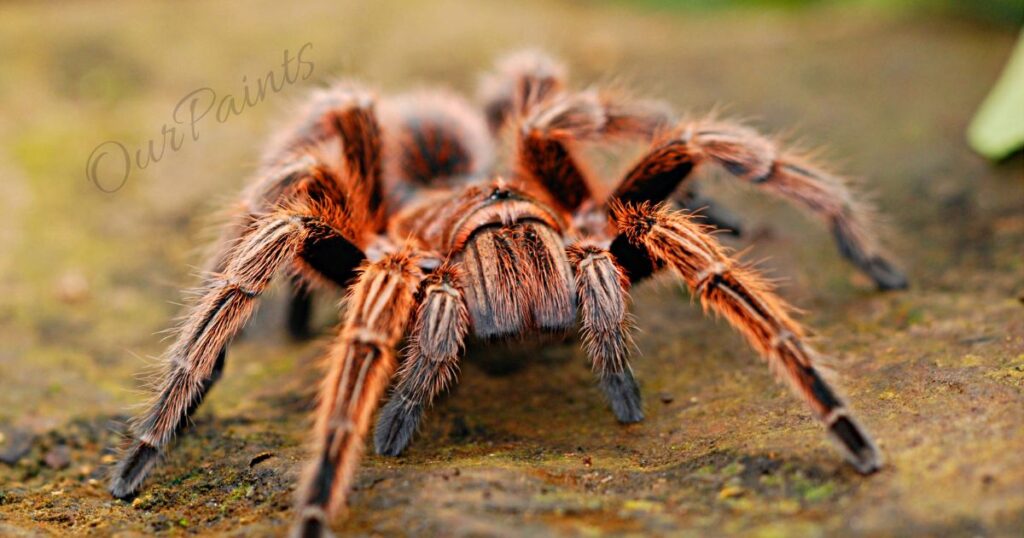
Red, a hue often associated with power, passion, and intensity, has an unsuspected ability – repelling spiders. Yes, you read it correctly! Spiders, it seems, harbor a strong aversion to the color red, making it an effective tool for keeping these eight-legged arachnids at bay.
Research attests to spiders’ natural inclination to steer clear of red-colored objects. This aversion could be attributed to their visual system, which is more attuned to specific wavelengths of light. Red may manifest to them as a warning or even a potential threat, prompting them to keep a safe distance from anything in that hue.
So, whether you’re grappling with a spider infestation or simply wish to fortify your home against potential arachnid intrusion, incorporating red elements into your decor can prove a shrewd strategy. Ponder adorning your space with red-accented curtains, rugs, or even an entire wall painted in a vibrant shade of crimson. This not only injects a dash of color into your domain but also creates an unwelcoming ambiance for spiders.
You can strategically position red-colored objects or decorations around windows, doorways, and other points where spiders are prone to infiltrate. This acts as a visual deterrent, making spiders think twice before venturing into your abode.
It is prudent to acknowledge that while red may dissuade spiders, it isn’t a foolproof solution. Complementary measures such as cleanliness, sealing potential entry points, and regular pest control must be incorporated to bolster your arachnid defense.
Nevertheless, integrating red into your surroundings can unquestionably serve as a fascinating and potentially effective facet of your overarching spider prevention strategy.
So, if you are seeking a natural, aesthetically appealing means to repel spiders, why not test the waters with the color red? Not only might you discourage these eerie arachnids, but you’ll also infuse your living space with a dose of boldness and character.
BLUE: A COLOR THAT SPIDERS DISLIKE:
The profound irony is that, while many folks harbor an apprehension of spiders, these arachnids, too, possess aversions, and the color blue happens to be one of them. Research has uncovered that spiders are inherently repelled by the color blue, rendering it a potent tool for deterring these eight-legged denizens from your abode.
The rationale behind this aversion lies in the spiders’ natural instincts and their visual capabilities. Spiders possess specialized eyes known as ocelli, sensitive to specific wavelengths of light. Blue light falls within this range, appearing significantly brighter to spiders compared to other colors.
By embedding blue into your environment, you construct surroundings that appear unattractive to spiders. This can be achieved in various ways, such as employing blue lighting or strategically placing blue items in your living quarters. For interior spaces, contemplate infusing blue accents into your decor, such as curtains, rugs, or a feature wall painted in a soothing shade of blue.
In the context of outdoor areas, opt for blue outdoor lighting or incorporate blue elements into your landscape, like blue flower pots or garden ornaments. This not only introduces a splash of color into your setting but may also aid in discouraging spiders from making themselves at home.
It is essential to acknowledge that while blue can act as a deterrent, it may not entirely banish spiders from your vicinity. By embracing this color into your surroundings, you can craft an environment that is uninviting to spiders, thereby reducing their likelihood of frequenting your domain.
So, if you are on the lookout for a natural and aesthetically pleasing technique to ward off spiders, consider harnessing the power of the color blue. In doing so, you can mold a space that not only assures your peace of mind but also infuses an aesthetic appeal into your habitat.
YELLOW: A COLOR THAT SPIDERS FIND UNAPPEALING:
It might astonish you to learn that spiders possess an acute aversion to the color yellow. Studies have brought to light that spiders are inherently repelled by this vibrant hue. So, if your objective is to deter these eight-legged intruders, integrating yellow into your surroundings might be a remarkable approach.
The precise reason for spiders’ aversion to yellow remains a subject of scientific conjecture. Some researchers postulate that spiders associate yellow with peril, as numerous venomous insects and predators in the natural world flaunt yellow markings.
Conversely, others contend that spiders simply view yellow as a bright and unnatural color, compelling them to avoid areas where it predominates.
Irrespective of the underlying rationale, it is unequivocal that yellow can serve as a powerful deterrent for spiders. This insight can be harnessed to your advantage by thoughtfully infusing yellow components into your living spaces. Ponder garnishing your abode with yellow flowers, ornamental details, or even sections painted in complementary yellow hues.
The introduction of yellow not only helps in keeping spiders at arm’s length but also infuses your surroundings with a cheerful and vibrant ambiance. Whether you are giving your living room a makeover, revamping your outdoor patio, or redefining your workspace, weaving yellow into your surroundings can serve as both a stylistic declaration and a natural spider-repellent.
Keep in mind, though, that the mere inclusion of yellow accents may not suffice to entirely extricate spiders from your domain. It remains imperative to uphold cleanliness and organization, as spiders are drawn to cluttered areas replete with concealed nooks and prey. Regular maintenance routines encompassing dusting, vacuuming, and the sealing of crevices further enhance your spider-prevention endeavors.
By wielding the power of yellow and integrating other spider-repelling measures, you can craft an environment that spiders find uninviting. This ensures a more comfortable and spider-free atmosphere for you and your loved ones.
Colors That Spiders Tend to Avoid: Beyond Yellow and Red:
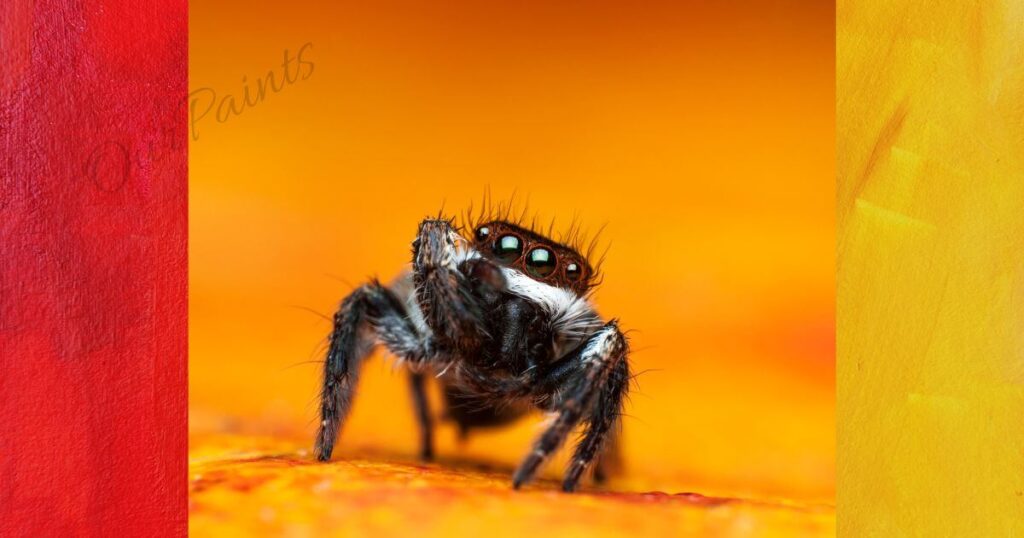
While spiders have acquired a reputation as sinister intruders, it’s worth noting that certain colors elicit an aversion in them. Grasping these color preferences can be instrumental in deterring spiders from infiltrating your living spaces or outdoor havens.
One of the colors that spiders eschew is white. Spiders tend to exhibit a preference for dark or warm colors, as they afford more effective camouflage for their webs. White, in contrast, stands out conspicuously and disrupts their ability to blend seamlessly into the surroundings, rendering them more visible and susceptible to predators. By introducing white elements into your decor, you can construct an environment that spiders find unenticing.
Another color that frequently repels spiders is yellow. Much like white, yellow is conspicuous and fails to provide optimal camouflage for spiders. Consider incorporating yellow accents into your living spaces, such as yellow flowers or decorative items, to discourage spiders from establishing residence.
Spiders have a tendency to shun bright and vibrant colors, such as orange and pink. These colors, akin to white and yellow, disrupt their capacity to go unnoticed and concealed. The inclusion of these shades in your environment can aid in molding surroundings that spiders deem less favorable.
It is imperative to understand that while these colors may discourage spiders, they are not panaceas for spider control. Spiders can still be present in areas adorned with these colors, particularly if other appealing factors like abundant prey and shelter are available. By exploiting colors that spiders lean away from, you can take an additional stride in the direction of establishing an environment less alluring to these eight-legged inhabitants.
Experimenting With Colors to Repel Spiders: A Tactical Approach:
When it comes to the quest for repelling spiders, numerous individuals seek a solution that guarantees the absence of these arachnids. While a spectrum of methods and products exists, one captivating approach revolves around experimenting with colors that spiders abhor.
By unraveling the hues that spiders find unappealing, you can strategically infuse them into your surroundings, crafting a less enticing ambiance for these arachnids.
Research illuminates that spiders exhibit distinct color preferences, and there are particular hues that they find unattractive. One of these colors is orange. This vibrant shade is believed to dissuade spiders due to its association with fire and danger in the natural world.
By incorporating orange accents into your decor or employing orange-colored spider-repellent products, you may achieve greater success in thwarting spiders.
Another color that spiders tend to avoid is blue. This cool and serene hue is often associated with cleanliness and freshness, qualities that spiders may interpret as signs of an uninhabitable setting. Consider integrating blue lighting in outdoor areas or introducing blue accents in your home to discourage spiders from taking up residence.
It has been observed that spiders harbor an aversion to bright and fluorescent hues. These bold shades might confuse and deter spiders, rendering them less inclined to construct webs or seek shelter in areas featuring such colors.
Experimenting with a range of vivid and fluorescent shades in your surroundings, whether through outdoor lighting or decor, may contribute to shaping an environment that spiders find unappealing.
While experimenting with colors to repel spiders is an intriguing approach, it is prudent to recognize that it does not offer a fail-safe solution. Spider preferences for colors can vary, and other elements, including the availability of prey and suitable hideaways, can influence their behavior.
By weaving colors that spiders abhor into your surroundings, you can fortify your arachnid-repelling arsenal and deter these creatures from settling in your space.
Combine your color experimentation with additional spider prevention methods, such as sealing potential entry points, reducing clutter, and maintaining cleanliness. A comprehensive strategy can aid in constructing an environment that spiders are less inclined to explore, assuring you peace of mind and a spider-free dwelling.
Guidelines for Infusing Spider-Repelling Colors:
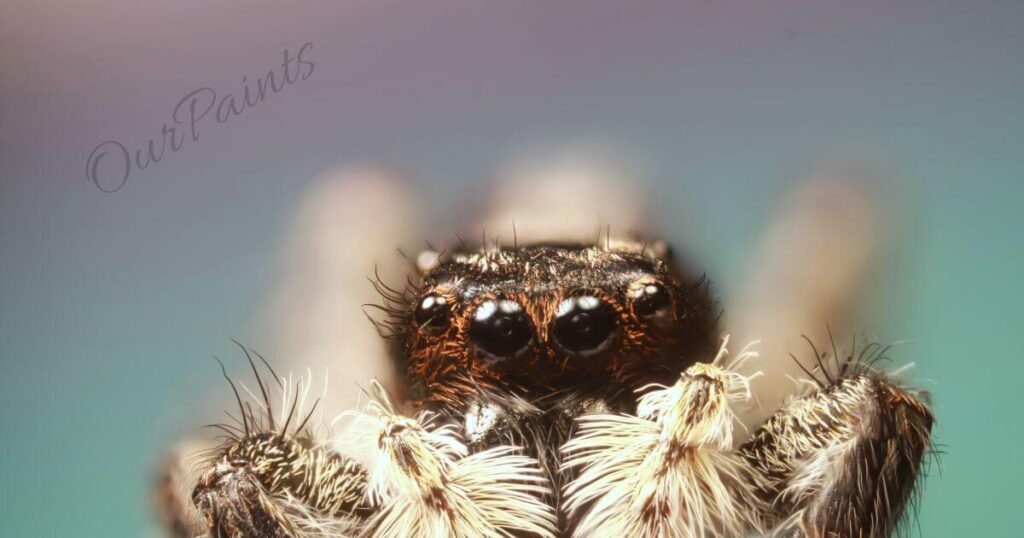
For those grappling with arachnophobia or a general aversion to spiders, incorporating spider-repelling colors into your surroundings can prove to be an effective strategy. While spiders are not known for their pickiness regarding colors, certain shades tend to discourage them.
By thoughtfully embracing these colors in your home or outdoor spaces, you can establish an environment that spiders find less attractive.
One of the colors that spiders tend to avoid is white. A decor scheme featuring white walls, furniture, or accents can help create an atmosphere that spiders find unwelcoming. The brightness and dearth of hiding places may deter them from spinning their webs or establishing nests.
Another color that often deters spiders is yellow. This vibrant hue can act as a natural deterrent, as spiders may interpret it as a signal of danger. Integrating yellow elements or accessories, such as curtains, cushions, or vibrant yellow flowers, can discourage spiders from infiltrating your living areas.
Some sources suggest that spiders also exhibit an aversion to mint green. This cool and refreshing color can be introduced via paint, textiles, or decorative elements. By weaving mint green into your surroundings, you may discourage spiders from making themselves at home.
It is imperative to acknowledge that while these colors can help deter spiders, they do not provide an infallible solution. Maintaining cleanliness, decluttering, and effective upkeep of your surroundings remain vital in averting spider infestations.
Regularly dusting, vacuuming, and sealing cracks and crevices can further enhance your efforts to create an environment that spiders find less appealing.
By implementing spider-repelling colors such as white, yellow, and mint green into your surroundings, you can proactively work toward a spider-free domain. Coupled with good cleanliness practices, these practical guidelines can aid in sculpting a space that is less inviting to these eight-legged inhabitants, granting you a sense of serenity.
tips for incorporating spider-repelling colors in your surroundings:
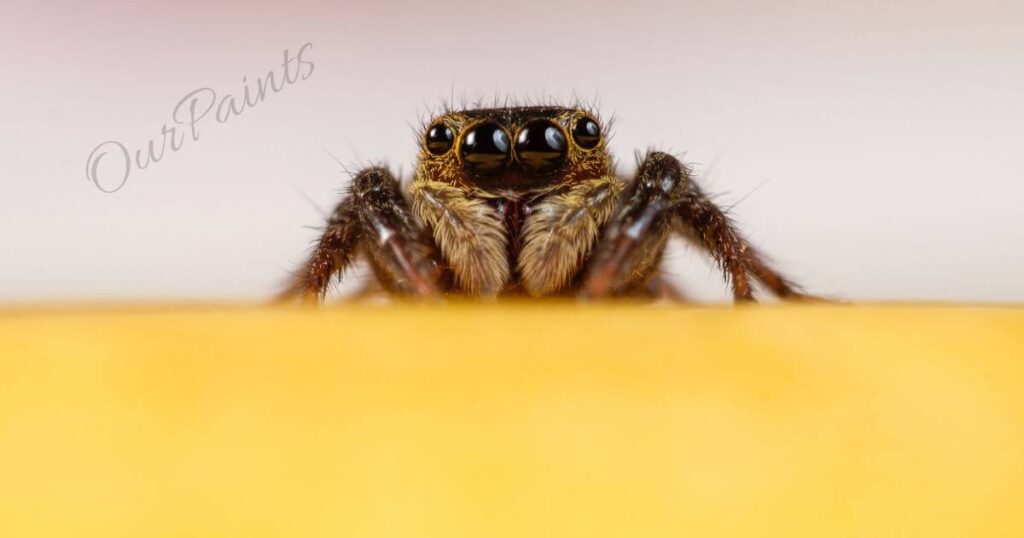
In the realm of spider prevention, there exist both natural solutions and strategies based on color preferences that can serve as effective tools in keeping these eight-legged creatures at bay. By employing these techniques, you can establish an environment that spiders deem unappealing, thereby diminishing the chances of them making themselves comfortable in your space.
One potent natural spider repellent involves the use of essential oils. Spiders tend to be averse to scents like peppermint, tea tree oil, and citrus. Diluting these oils with water and employing them in areas where spiders typically hide or enter your home can establish a natural barrier that spiders will want to avoid.
Another natural spider repellent centers on vinegar. Spiders find the strong odor of vinegar disagreeable, making it an effective tool for deterring them from setting up their webs. Wiping down surfaces with a vinegar solution can deter spiders from establishing their presence. A blend of vinegar and water, sprayed in cracks and crevices, can discourage spiders from infiltrating your home.
In addition to natural repellents, employing color-based strategies can be an effective means of discouraging spiders. Research indicates that spiders have a strong aversion to specific colors, such as bright yellows and oranges. By infusing these colors into your home decor or placing objects of these colors near windows and entry points, you can create an environment that spiders find uninviting.
It is vital to acknowledge that, although these natural spider repellents and color-based strategies can discourage spiders, they may not eradicate them entirely. It remains essential to complement these methods with proper cleaning and maintenance practices to ensure a spider-free environment.
By implementing these natural spider repellents and color-based strategies, you can take proactive measures to keep spiders away from your home, guaranteeing a more arachnid-free living space.
CONCLUSION:
Comprehending the colors that spiders disdain can be a valuable asset in your quest for a spider-free space. By infusing these colors into your decor, outdoor spaces, and personal belongings, you can craft an environment that spiders find uninviting and less appealing.
While colors can play a pivotal role in deterring spiders, they do not constitute a panacea. It is imperative to couple color strategies with other spider prevention techniques, such as sealing entry points, decluttering, and maintaining cleanliness.
It is essential to recognize that different species of spiders may exhibit distinct color preferences. Conducting research and acquainting yourself with the specific spider species prevalent in your area is paramount to tailoring your color choices accordingly.
In the grand scheme of things, creating an environment that spiders find unwelcoming can significantly contribute to a more spider-free space and grant you the peace of mind you seek. Experiment with an array of colors and techniques, and discover what works best for your unique circumstances.
FAQs ABOUT WHAT COLOURS DO SPIDERS HATE?
What colors do spiders hate the most?
Spiders tend to dislike bright and vibrant colors like red, yellow, and white. These colors are believed to disrupt their ability to blend in and may act as a deterrent.
Do all spider species have the same color aversions?
No, different spider species may have varying color preferences. While some colors like red and yellow are generally disliked by many spiders, specific species may have unique aversions based on their ecological niche.
Can I use colored light to repel spiders?
Yes, you can use colored lighting, such as blue or yellow outdoor lights, to discourage spiders from entering your space. Spiders are known to react to the wavelengths of light, making these colors effective as repellents.
Is using color alone enough to keep spiders away?
While color can play a role in deterring spiders, it is not a standalone solution. Proper spider prevention also involves maintaining cleanliness, sealing entry points, and using other methods in combination with color-based strategies.
What are some practical ways to incorporate spider-repelling colors in my home?
You can incorporate spider-repelling colors by using colored decor, paint, accessories, and outdoor lighting. Elements like curtains, rugs, and flower pots in disliked colors can help create an environment that spiders find unappealing.

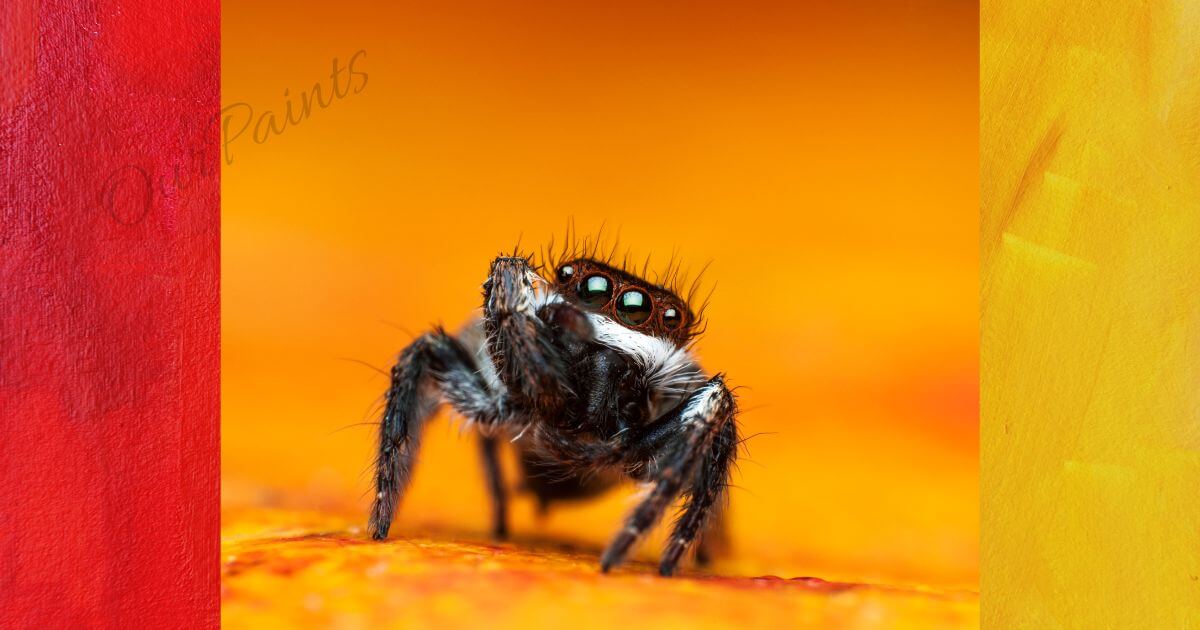
I’ve found so much motivation and encouragement here. Great work!
This is decently worded and useful, kudos. I appreciate the way you cover key concepts succinctly. It’s useful info and I find you worth following.
I’ve learned so much from this blog. It’s a fountain of encouragement.